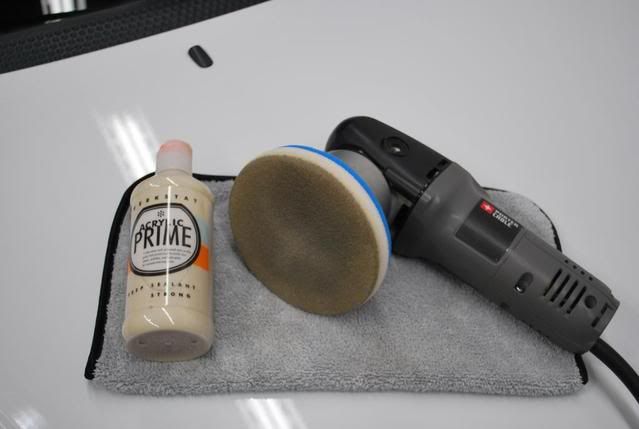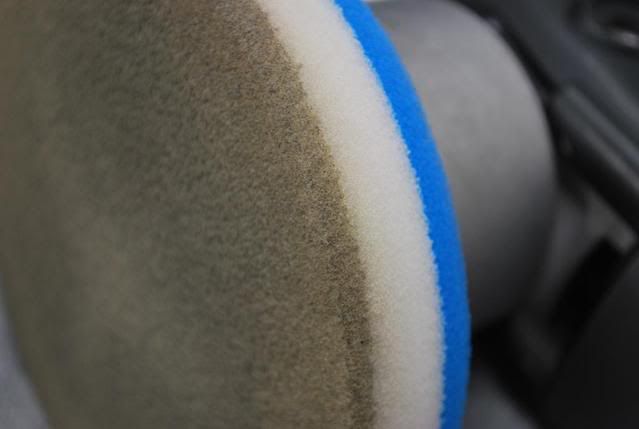Here is a post in another thread on another forum started by a VERY experienced detailer. Please see another reason why paint cleaners are important.
Paintwork cleansers are typically used to clean the paint well, thus promoting a better bond between the paint and your LSP. This in turn will improve the durability of your LSP.
This is what I termed,
Synergistic Chemical Compatibility as discussed in this thread,
Miscible and Immiscible - Wax and Paint Sealant Bonding
Specifically note the portion in blue text...
Mike Phillips said:
So unless a manufacturer specifically states or recommends that an automotive paint finish must be stripped clean for their wax or paint sealant to properly bond or adhere, then I think it's safe to say that the chemist behind the brand has created their wax and paint sealant formulas to use the same miscible oils, (or other miscible substances), in their surface prep products to aid in the bonding or adhering of the protection ingredients used in their waxes and/or paint sealants to paint.
This would be called, Synergistic Chemical Compatibility.
It's entirely possible that a lot of popular waxes and paint sealants on the market will bond or adhere to paint correctly after the paint has been prepped using compounds, polishes and paint cleaners outside the brand of the waxes or paint sealants being applied. There's no easy way of knowing or testing, but in my opinion, I would think the chances for this type of chemical compatibility to be more likely than less likely as there is probably some common chemistry involved in surface prep products and protection products that overlaps among different polish and wax companies.
Don't forget their are some that believe you must chemically strip ANY paint cleaner, polish or glazes before applying any type of wax, paint sealant or coating in order for the protection ingredients to bond. That line of thinking is completely opposite of what 911fanatic wrote above, this part...
Paintwork cleansers are typically used to clean the paint well, thus promoting a better bond between the paint and your LSP.
This in turn will improve the durability of your LSP.
What 911fanatic is saying is what has been practiced for
decades, actually ever since car waxes and paint cleaners were
invented. It was only till Zaino appeared and recommended that paint needed to be stripped before application of their paint sealants that the
Tipping Point was reached
via discussion forums that started the entire wipe your paint down with IPA craze started. I documented this in 2003 in a 66 page report I wrote called "The Zaino Case Study".
I've seen it all. We've gone from one side of the spectrum to the other side of the spectrum and now back to the original side of the spectrum.
Kind of like how in the old days if you applied too much wax you risked getting a
wax build-up which is seen as a negative and now days that thinking as been turned upside down and a wax build-up is called
layering.
:laughing:
I have a Ford Focus in my shop that was in for a wash and wax, but after washing the paint still looked a little dull. Using my PC and a white pad, I applied some Werkstat Prime Strong. It was applied at speed 3, one panel at a time and then wiped down.
For illustrative purposes, I used one pad for the entire car. Usually I would use 2 or 3 if the paint was this dirty.
Hey I made the same point here, about how you can get the "surface" clean but there's still dirt and contaminants below the surface, check this out from this thread,
1954 Ford F-100 - Extreme Makeover - Process and products used
Note we wiped the car clean and the CLAYED the paint, this would have EFFECTIVELY removed pretty much ANY topical dirt or contamination.
The we buffed the paint using a white colored polish using white colored pads but look at the color of the pad after buffing paint.
Where did the dirt come from?
That's my hand in the picture, see? I removed all the "topical" dirt and contaminants AFTER wiping the paint clean. (We don't wash classics, street rods or antiques, you would introduce water to where you cannot dry and cause rust)
Mike Phillips said:
This truck was re-painted approximately one year ago but just from exposure to the outdoors has made the paint vulnerable to air-borne contaminants...
This shot was taken with my trusty, dusty Canon Rebel with the flash on after claying the roof...
Now if all the topical dirt has been removed... how did the pad on the right in the pictures below get so dirty?
Mike Phillips
Robert using the PC and Glenn using the Meguiar's G110v2
[IMG said:
http://www.autogeekonline.net/gallery/data/1290/54Ford83.jpg[/IMG]
Remember how dirty the clay was after claying just one half of the roof? Clay remove ABOVE surface bonded contaminants but it doesn't remove embedded staining of the paint. You can see abrading the paint with a light polish and a microfiber pad has removed the staining effect and restored a very bright and shiny finish.
And here's me doing the same thing only on a different area of the truck... note the dirt coming off the clear coated yellow paint staining the white pad brownish/grayish
Mike Phillips said:
Me using the Griot's Garage 6" Random Orbital Polisher
As you use a microfiber pad the fibers will lay down flat at become matted with both spent product and the paint you're removing anytime you're abrading the paint. You can also see a grayish color on the pad, this is staining of the paint caused by road grime and air-borne pollution. Staining is both topical and to some degree embeds into the paint so when you do any type of compounding or polishing you remove the staining and restore a more clear and brighter finish as you can see as we buff out this truck
To clean the microfiber pads we use a Pad Conditioning Brush with the tool OFF and simply hold the pad from spinning with the hand that's holding the polisher. I cover all the ways to clean both foam pads and fiber pads starting on page 76 of my book.
Here you can see the fibers have bee fluffed up and this pad is ready to go back to work...
The BIG PICTURE is and the point that Dave was making was that paint cleaners are in fact important to key word, ENSURE the paint is clean and perfectly prepared to accept the wax.
I don't care to argue the minor points between paint cleaners, pre-wax cleaners, AIO's Cleaner/Waxes, or Fine Cut or Ultra Fine Cut Polishes because I've always said,
"Find something you like and use it often"
As long as you're getting the paint clean and you're happy that's all that's really important and in the case above... Glen was very happy that we got the paint on his show truck sparkling clean. Plus, by
hanging out at Autogeek, he learned how to machine polish his own paint...
Glen
Here's Glen using a Meguiar's G110v2 to remove the swirls out of the tailgate. This is the first time Glen has ever used a machine to polish paint and he did a superb job!
This is what
cleaned, polished and sealed paint looks like....
And about the point made by 911fanatic, he did a great job of explaining how paint can need further cleaning with the dramatic
after pictures Dave shared and that's what makes a detailing discussion forum helpful, sharing accurate information that helps others to understand a process so they can get the best results possible for their efforts.
And I'll stick to my original post to this thread...
Very nice article with excellent pictures that really drive home your points.
I'd say a majority of the time everyone gets all caught up in creating swirl free flawless finishes and there's nothing wrong with that but sometimes the right procedures for some cars and some people would be to keep it simple and simply use a paint cleaner or pre-wax cleaner.
Nice job Dave, thanks for taking the time to share this...
:dblthumb2:













